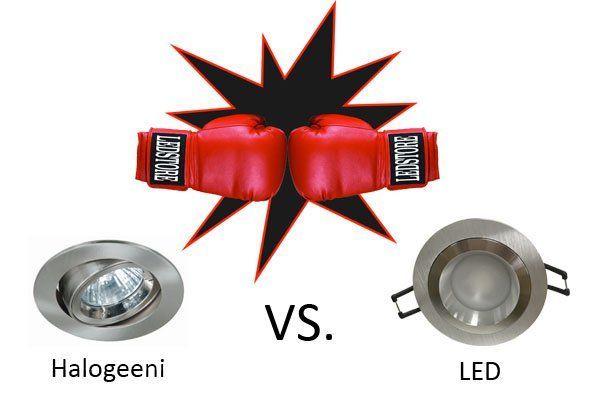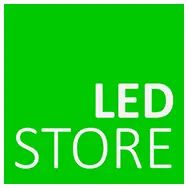
Which would I put in, LEDs or halogens? Led is so expensive. The familiar torsion?
The price, light output and reliability of LED lamps are better than ever. Why would you still buy an old consumable halogen lamp? No more constant changing of bulbs or expensive electricity bills! Led luminaires have a good colour rendering index and a wide range of features to choose from. You can choose either warm or neutral white light and in most cases even dimming is possible.
EDIT: Halogen lamps have been discontinued following the introduction of the new Energy label.
Led or halogen?
Halogen lamp |
LED luminaire |
| Lamp life 2500 hours | Lamp life 50000 hours |
| Lamp age 1X | Lamp age 25X |
| Lamp temperature 250°C | Lamp temperature max. 50°C |
| Power consumption 50W (5.5X) | Power consumption 9W (1X) |
| Luminous Flux @ 1m 500 Lux | Luminous Flux @ 1m 600 Lux |
| Luminous Eff. 12 lumens/w | Luminous Eff. 90 lumens/w |
| Light colour only one | Light colour Several options |
| Persistence of light hue Poor | Persistence of light hue Good |
| UV or IR radiation Yes | UV or IR radiation No |
| Heavy metals Yes | Heavy metals No |
| Impact resistant No | Impact resistant Yes |
| Purchase price Cheap | Purchase price Expensive |
| Long term price Expensive | Long term price Low cost |
6 biggest advantages of LED lights compared to Halogen
Temperature
Halogen spots produce too much heat (>250°C), which damages the objects being illuminated.
Obviously, these temperatures can be dangerous if the lamp comes into contact with skin or flammable materials.
The effect of temperature must be taken into account, especially when illuminating artwork or in small spaces.
The average LED temperature is only 70°C. The lamps are safe to handle and will not burn fingers. In addition, less unnecessary heat released also means less ventilation in the room, so already in the design and construction phase you are already spending money.
LEDs don't need expensive, unnecessary protective caps for installation, which usually reduce the amount of insulation in the house!
Electricity bills
Halogen lights are not as energy efficient as LED spot lighting.
Halogen lamps also produce IR radiation, where most of the energy is lost as heat.
For example, a 9W LED can produce light equivalent to 50-75W of halogen. An LED can produce mono light and use a collimating lens to direct the light. This way, no energy is wasted as heat. LED lights can save up to 80% of your lighting electricity bill!
No UV radiation
Quartz filament, on which halogens are largely based, emits high levels of UV radiation, which also requires glass in the lamp and precise manufacturing and approved shielding. Check your own lamps!
LEDs do not emit UV radiation, so the lamp and light are safe for your skin.
Life expectancy
According to major halogen manufacturers' catalogs, the average life of a halogen is 2500 hours (only 104 days!).
The average lifetime for LED lamps is 50,000 hours (i.e. 5 years and 8 months!). Therefore, LEDs drastically reduce maintenance costs.
Wider colour temperature range (CCT) and colour selection
Halogen lights have a colour temperature between 2800 K and 3500 K depending on the manufacturer and lamp type. Some manufacturers manage to achieve a colour temperature of up to 4700 K.
LEDs offer many colour choices such as warm white (2800K - 3800K), cool white (4000K - 7000K), red, blue, green, yellow and even RGB colour mixing. In addition, LED retains its colour for a long time, although unlike Halogen where colour changes rapidly in use.
No passive defects
The filament in a halogen lamp is pressurized, and is very weak. Quartz The capsule must not be touched with bare hands, as oil and fingerprints can corrode the quartz and weaken it. At the end of its life, the filament coil inside the capsule may touch the quartz and melt into it while it is still hot. This event can even shatter the halogen lamp.
Thanks to LED soldering technology, the LED is not fragile or has no moving parts inside, which is why the lamp is robust, shock-resistant, and safe to touch.

